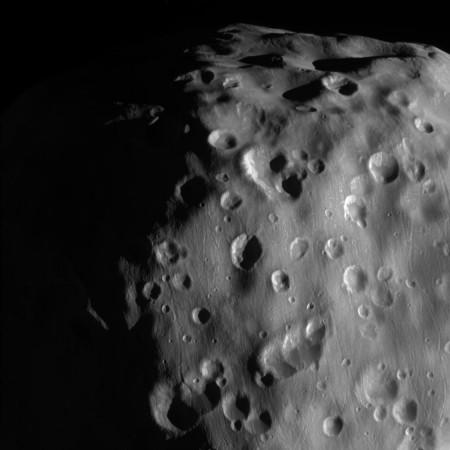
NASA's Cassini captured a new high-resolution image of Saturn's innermost 'potato' moon Epimetheus. The Cassini space probe captured the photo on February 21, 2017, with its narrow-angle camera.
Also Read: Mars-sized planet: Have researchers discovered a 10th planet in our Solar System?
The spacecraft also used a spectral filter to take the photo, which preferentially admits wavelengths of near-infrared light centred at 939 nanometers.
The picture portrays the anti-Saturn side of the moon situated around 15,000 km (9,300 miles) away from the gas giant at an image scale of 290 feet (89 meters) per pixel.
The Grand Finale will be the last act of Cassini which is scheduled to end on September 15, 2017. The death plunge of the spacecraft in Saturn's atmosphere will help the researchers closely assess the unexplored parts of the planet.

Here are the top 7 facts you need to know about this little potato moon:
- The Epimetheus moon has a diameter of 113 kilometres (70 miles), which makes it too small to be held in place by gravity, have an atmosphere or be geologically active.
- It is one of the innermost natural satellites of the Saturn, which is pale-gray and potato-shaped.
- The little moon of the gas giant planet has an irregular surface covered with craters-- caused by meteor impact-- as large as 30 kilometres (19 miles).
- The craters present on the moon are a result of eons of collisions and cannot be erased due to the absence of geological activities.
- Epimetheus shares its orbit around the ringed planet with another moon – Janus -- which is four times more massive than Epimetheus-- a unique phenomenon in the Solar system. One moon is known to orbit 50 km (31 miles) closer to the planet in comparison to the other.
- The closest these moons get to each other is around 10,000 km (6,200 miles). These moons pass by each other in every four Earth years and this encounter triggers gravitational interaction resulting in exchange of places.
- In 2006, Cassini discovered the orbits of the Epimetheus and Janus moons have the presence of faint ring of debris, which has a radial extent of around 5,000 km (around 3106 miles). The particles emitted by the surfaces of the moons because of the meteoroid impact is believed to be responsible for the ring around their orbital path.
Watch this video to understand the orbit of Epimetheus and Janus moons:

















